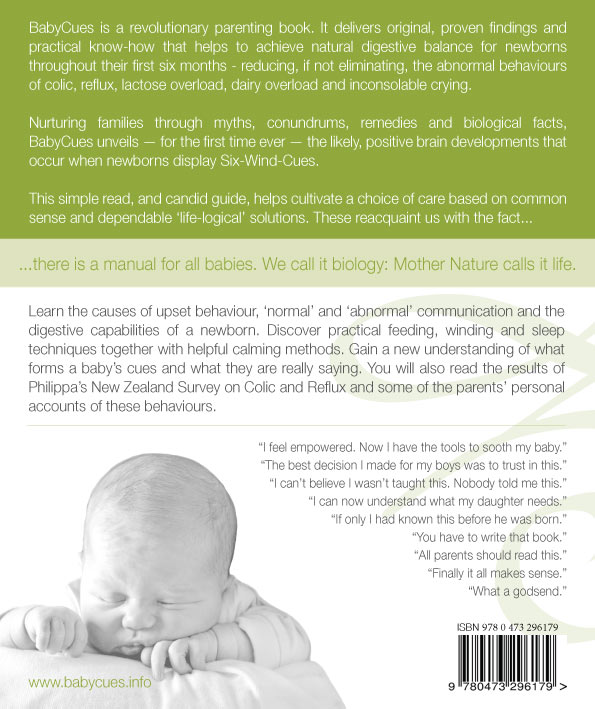Newborn Hunger Cues Explained

Where to begin, for it is fair to say that the way I define hunger cues is probably significantly different to what most parents are taught. Instead of looking for the specific widely taught cues that I have listed below, I diagnose hunger through the research and understanding we have about how a newborns and infants digestive system functions (it's capacities and capabilities), along with their input and output levels. I do this because I personally think it is far too hard to define the cues for hunger compared to Digestive Overload (aka colic, reflux, silent reflux, and the witching hour) for both are very similar. So let’s delve into this a little further.
Get the help you need
Hailed as a game changer, life-saver and a must read from parents and postnatal professionals, this self-help book truly has the answers that NATURALLY prevent and heal the symptoms of colic, reflux, silent reflux, the witching hour and lactose and dairy overload - aka Digestive Overload, the true cause of these symptoms.


- nurture your child's digestive system
- Burp your baby to comfort
- Understand their Six-Wind-Cues
- Calm baby with techniques that work


LEARN HOW TO
- nurture your child's digestive system
- Burp your baby to comfort
- Understand their Six-Wind-Cues
- Calm baby with techniques that work
Widely taught hunger cues
The common cues that parents are taught to look for to denote hunger are:
- baby roots to suck
- places fingers in their mouth and sucks
- opening and closing of mouth
- smacking and licking lips
- moves their head from side to side
- turns toward the breast while being held
- squirming around a lot
- become fussy
- crying and screaming
So, do you read that list and think, “but my baby does those cues for numerous other reasons too, and I still feel baffled at how I am meant to tell if they are hungry.” If so, you are not alone. I personally think these cues are confusing because they do occur for many reasons. Let’s look at these other reasons…
Baby roots to suck – rooting to suck is a cue that your baby wants to suck – not eat. It is a cue for sucking only and our baby’s want to suck for many reasons, like when they feel uncomfortable anywhere in their body, teething, tiredness, reeving up for a bowel motion, or trapped wind to name a few. While their root to suck reflex is beneficial for feeding, and them finding their way to food, it is also about enabling comfort for them. It’s their natural method of self-soothing. So we can’t categorically say this cue denotes hunger, and it certainly doesn’t tell us whether a baby is getting enough food.
Places fingers in their mouth and sucks – again the above applies. All newborns suck their hands in the womb. This is one of their innate reflexes at play that helps them to self-sooth and potentially ease the discomfort in their gums if there are teething, or in their digestive system if this is sore, or help them nod off to sleep if they are tired. It doesn’t necessarily mean they are hungry.
Opening and closing of mouth – I’m sorry but I laugh at some of these. Our newborns open and close their mouth for many things, especially if we stimulate around the reflex area of their mouth. This cue is also a piece of one of their Six-Wind-Cues combined with the next so called hunger cue on the list…
Smacking and licking lips – when baby has trapped air sitting high in the stomach and/or osephagus ready for release, they show the Wind-Cue of chewing and poking out their tongue. This Wind-Cue is commonly mis-taught as a hunger cue, and currently has many a baby being overloaded with too much food for their age and stage, for this is not them searching for food, they are however telling you that they need to be burped.
Moves their head from side to side – this happens when your baby’s reflex area around their mouth and cheeks are touched. It’s also exhibited when some of the Six-Wind Cues are present, along with it being a natural capability of newborns as they begin to visually explore their new world.
Turns toward the breast/chest while being held – again, this also occurs because the reflex area on the face is being stimulated and if on Mum, then baby can smell their mother’s milk and may turn toward it, but that doesn’t necessarily mean they are hungry. Yes they may be at the time, but it’s another taught hunger cue that is hard to define.
Squirming around a lot – hmmm. Sorry to sound repetitive here but again, babies squirm for many reasons with one of the most common being movement of food, wind and waste in the digestive system. They will also squirm when hungry yes, but it doesn’t always denote hunger.
Become fussy, crying and screaming – you guessed it. These can be cues for many things too like, cramping or an overabundance of gas, lactose, fat in the digestive tract. Too much food, not enough food, bowel motions, and pain anywhere in the body. Being fussy or crying can also be a sign that baby is tired.
So with all of this known, how can you then be confident that baby is having enough to eat? That their crying, rooting to suck and shorter sleep cycles are not about hunger?
How to tell if baby is hungry
To be truly baby led, and take the pressure off parents to get the cues right, I think it’s time to change our rationale, and base our decision on the firm foundation of digestive biology and its development, along with watching how a baby is feeding to diagnose if they are hungry or not. By doing this we embrace an approach that is genuinely, holistically and legitimately baby led, rather than perception led as all the cues above are. So here are the four things I watch to ascertain whether a baby’s symptoms are from hunger, or Digestive Overload. The baby’s:
- suck swallow ratio when breastfeeding
- amounts when bottle feeding are conducive to healthy growth for their age
- number of wet and dirty nappies during a day
- weight gain
Suck swallow ratio – at every breastfeed it is important to watch and count your baby’s suck swallow ratio, because this is what tells you whether baby is receiving enough milk at each feed. You do this by watching their mouth for the suck, and their neck for the swallow. If you don’t have an oversupply, or fast flow throughout the entire feed, then baby will more than likely have a suck swallow ratio that goes like this: one suck to one swallow (1:1) for around the first one to three minutes, moving to a combination of 1:1, 2:1 and 3:1, 4:1 for around the next three to ten minutes, moving to a 5:1, 6:1, ratio when they are full and comfort sucking.
In saying that, newborn to two week old babies can fall asleep quite quickly at the breast, so do be mindful here that you are concentrating on the suck swallow ratio, not the clock. Also, newborns that are coping with an over abundant supply or fast flow can have a very different suck swallow ratio, staying between 1:1 to 3:1 throughout the entire feed, which means they fill their tummies faster and won’t need as long on the breast to feel full. So do get to know your baby’s suck swallow ratio and know that it can change throughout their ages to as they become more efficient and your hormones change.
Amounts when bottle feeding – nature’s biology has our newborns and infants being birthed with stomachs that are around a certain size at each age. Knowing that you are feeding to these amounts, in accordance with their digestive function – so every three and a half to four hours for those amounts to be broken down and absorbed in a healthy manner – gives you certainty that baby is not feeling hungry.
Number of wet and dirty nappies during a day – two to three slightly heavy wet nappies/diapers a day, or one to two heavy wet nappies shows you that your child is taking in enough fluid. They may also have a few lighter wet nappies with the heavier one’s throughout the day too, but if these are missing that is generally not a concern. In regards to dirty nappies, from newborn to around three to four weeks it is healthy for your baby to have two maybe three reasonably sized dirty nappies a day, with this slowing to one a day, or one every day-and-a-half. It is not normal for your baby to go longer than three days without a bowel motion and while this can denote constipation, it can also be a symptom of hunger.
Weight gain – in order to keep an eye on hunger issues it’s really important to get baby weighed every one to two weeks up to two to three months old. Especially if they are struggling to gain weight for whatever reason. The minimum like to see from newborn to six months is 20-25 grams a day, and from six months onwards 50-80 grams.
If after all of these guides you are still uncertain if baby is hungry or upset from Digestive Overload, please feel free to either book in for a consultation with me or purchase my self-help book below for further information.







